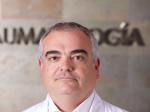Rhizolysis is a non-invasive technique that can treat back pain through several punctures in the area of the spine to be treated.
Benefits of the intervention
This technique makes it possible to treat pain originated in the joints of the spine (neck pain, back pain or low-back pain) in a non-invasive way, without general anesthesia or hospitalization. It is indicated in cases of mechanical pain (pain that appears with movement) in which the nerves from the spine to the extremities are not affected. It is based on the existence of nerve endings that transmit pain originated in joints that connect two vertebrae. This nerve endings that can be altered by radio frequency pulses to make them stop generating pain impulses, which are the main and, sometimes, the only symptom of a degenerative disease of the spine.
Medical-technical description
Depending on the area to be treated, 3 or more punctures are made in one or both sides of the spine using special needles that carry within them an active tip catheter radiofrequency transmitter and are connected to a generator. Each of these catheters is placed on a joint to treat under X-ray control. Once the needles are placed, the motor and sensory tests are used to ensure the correct position of the active tip so that the treatment can be conducted in complete safety. Then, the radiofrequency is applied for a few seconds at each joint. After that, the needles are removed and the procedure ends.
The intervention
The rhizolysis is performed in the operating room with the patient in prone position (in cases of lumbar and thoracic pathology) or supine position (in cases of neck pain). It is performed under local anesthesia in the skin area to be punctured. Before the radiofrequency application and once the catheters are placed, local anesthesia is injected on the areas to be treated. The total duration of the procedure may vary depending on the levels to treat and the accessibility to puncture them. It takes usually between 30 and 45 minutes to complete the treatment. At the end, the patient walks out of surgery and can travel to his/her home without the need of special care.
Preoperative measures
- Assessment prior consultation, deciding and stating the specific aspects of the intervention and giving informed consent
- You must provide a comprehensive list of medicines you take regularly (including herbal medicines) at the time of the operation
- Conducting a preoperative evaluation consisting of a blood test, biochemistry, coagulation, chest radiograph and ECG
- Wash the area to undergo treatment the previous night and morning with antiseptic soap
- Do not eat or drink 8 hours before surgery
- Do not wear any metal object during operation (rings, bracelets, earrings, piercing, etc.)
Postoperative cares
- It is possible that, after surgery, and during the following days you might feel some local discomfort, which will disappear with the medication prescribed by your surgeon
- Once discharged, you must contact us if you have any pain untreatable by the usual means at the surgical area or fever and chills processes.


